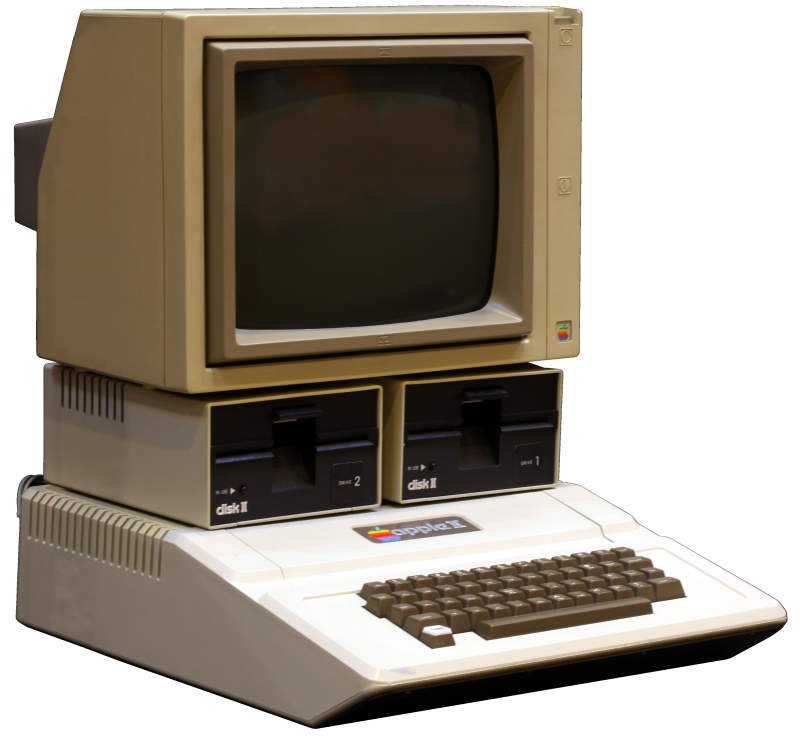This page primarily focuses on a selective history of significant word processing software developed for personal computers.
1979, AppleWriter 1.0 for Apple II: Developed by Apple, AppleWriter was the first popular PC word processing program, though it had its quirks. It displayed text entirely in uppercase. Characters that the user signified as uppercase appeared in inverse color capitals, while characters in lowercase appeared as standard capitals.

1981, Bank Street Writer 1.0 for Apple II: Developed by the Bank Street College of Education in New York City, BSW went on to become the leading word processing program for the Apple II. It included displaying lower case letters!
1981, AppleWriter II for Apple II: Displayed lower case letters
1982, WordStar 3.0 for DOS: Originally developed by MicroPro for CP/M in 1978. It became a de facto standard. By 1984 sales hit $70 million.
1982, WordPerfect 2.2 for DOS: Originally developed for the City of Orem, Utah by Brigham Young University (BYU) in 1979, WordPerfect was first ported to DOS and sold to the general public in 1982.
1983, Word 1.0 for DOS: Originally named Multi-Tool Word.
1984, Word 1.0 for Macintosh: Released for the Macintosh.
1984, StarOffice 1.0 for DOS: StarOffice was released by the German student Marco Boerries, then 16 years old, living as an exchange student in Silicon Valley. StarOffice would later become OpenOffice.
1984, AppleWorks 1.0 for Apple II: AppleWorks was one of the first integrated office suites for personal computers, featuring a word processor, spreadsheet, and database merged into a single program.
1985, WordPerfect 1.0 for Apple II: WordPerfect was initially ported to the rising Apple II.
1986, WordPerfect 4.2 for DOS: WordPerfect surpassed WordStar as the leading word processor.
1987, Microsoft Works 1.05 for DOS: Its core functionality included a Word Processor, a spreadsheet and a database.
1989, WordPerfect 5.1 for DOS: WordPerfect released the hugely popular version of its product. The WordPerfect 5.1 file format, still on DOS, became the de facto standard for the word processing industry for many years.
1989, Word 1.0 for Windows: Released for Windows.
1991, Microsoft Works 2.0 for Windows: MS Works moved to Windows.
1991, WordPerfect 5.1 for Windows: WordPerfect’s popular DOS version was ported into Windows.
1993, Word 6.0 for Windows: Included everyone’s favorite feature – autocorrect!
1994, Novell acquires WordPerfect Corporation
1995, Word 95 for Windows: Released for Windows 95.
1996, Corel acquires WordPerfect from Novell
1999, Sun acquires StarDivision: In 2000, Sun Microsystems announced that it would make the source code of StarOffice available for download with the intention of building an open-source development community around the software and providing a free and open alternative to Microsoft Office named OpenOffice.org
1999, Word 2000 for Windows: Released part of Office 2000, Word 2000 gave Microsoft, who already led the WP sector, 90+% market share.
2005, Writely: Writely was a web-based word processor created by the software company Upstartle.
2006, Google acquires Upstartle Google integrates Writely into its software suite online, calling it Google Docs.
2010, Oracle acquires OpenOffice from Sun
2011, Oracle releases OpenOffice to Apache Software Foundation